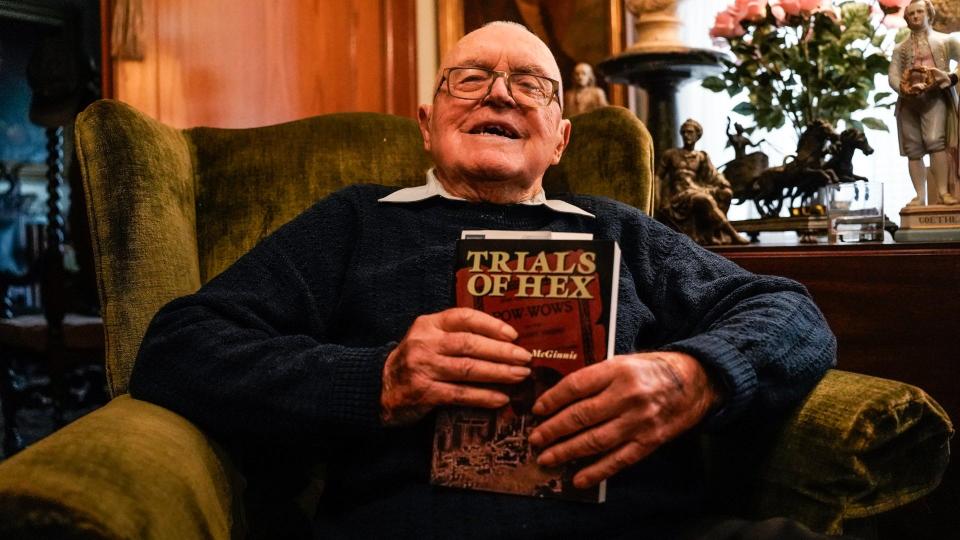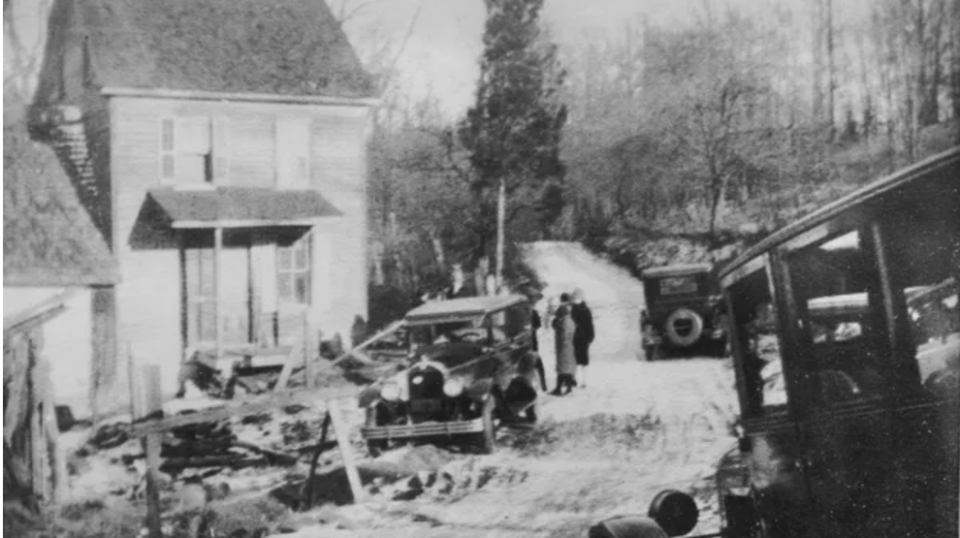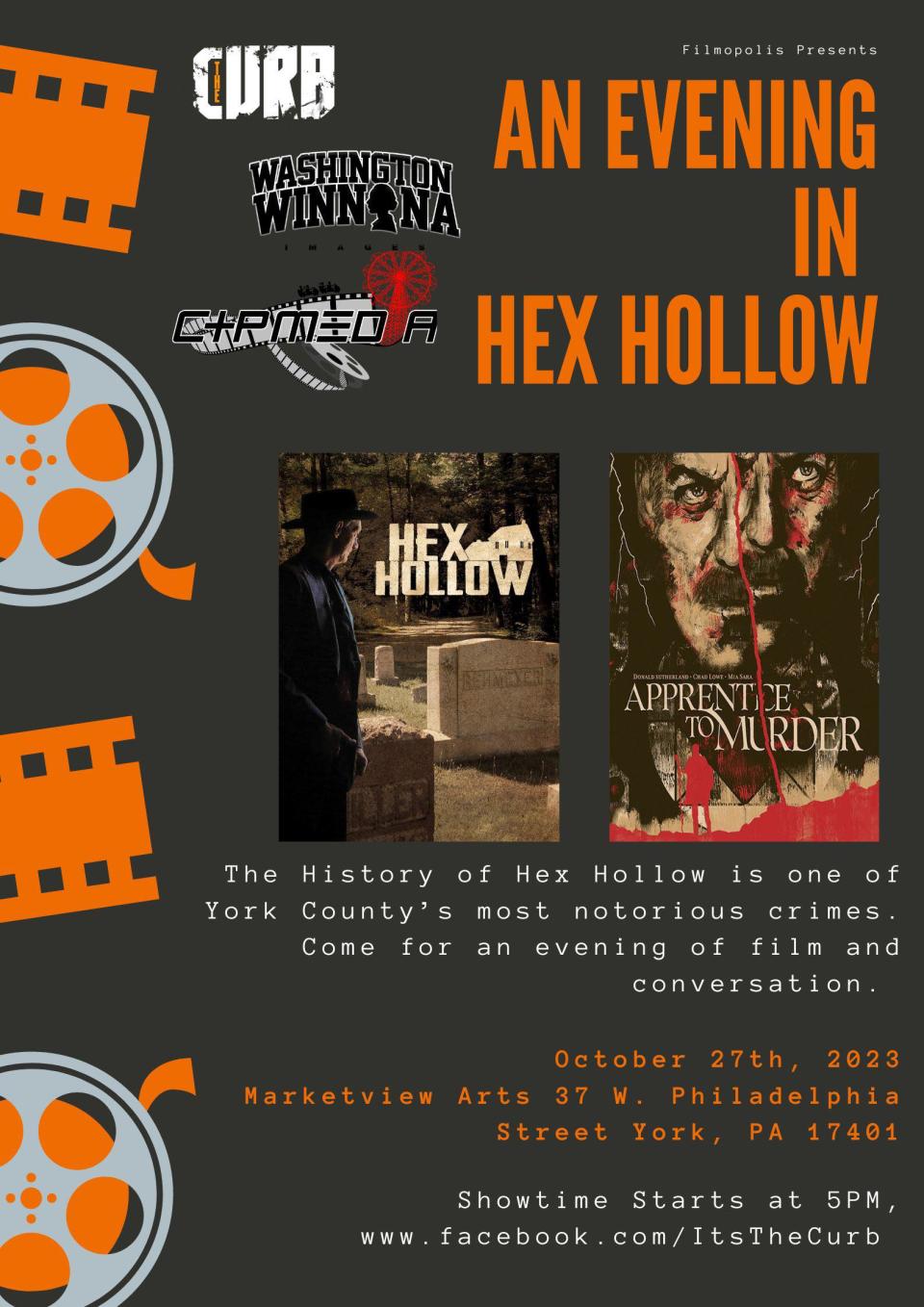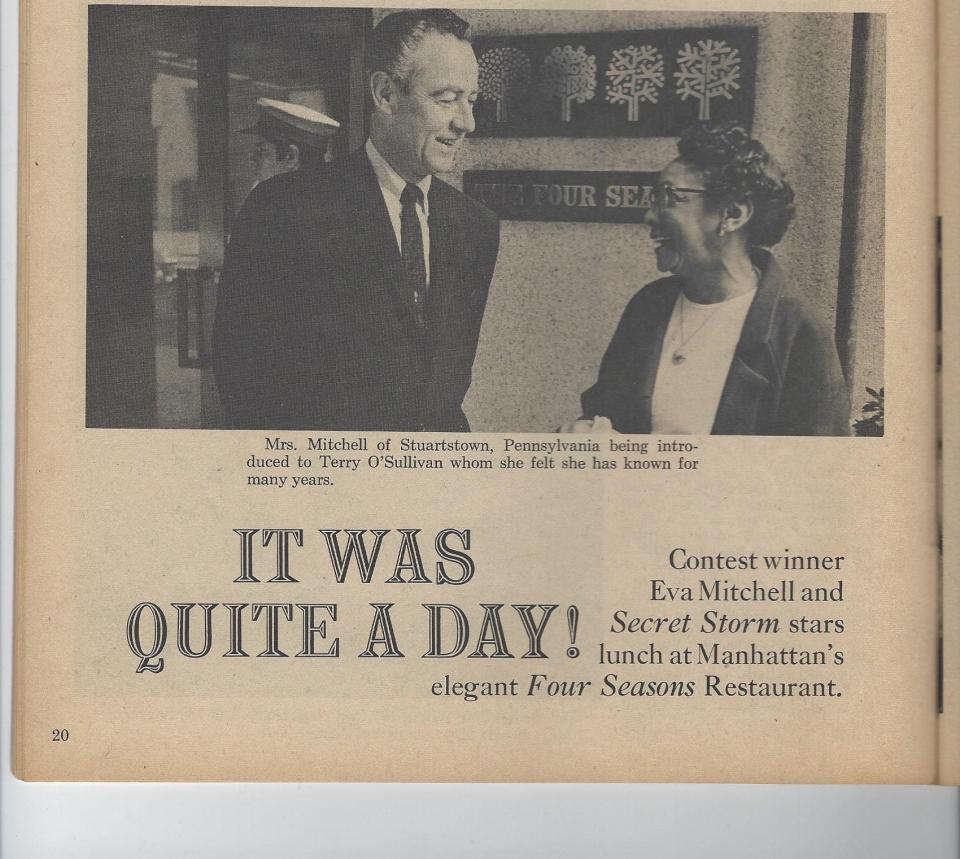An evening to learn about York County’s notorious Hex Murder Oct. 27 at Marketview Arts
From the beginning, J. Ross McGinnis had a connection with the sad and terrible York County story that became known as the Hex Murder.
For starters, McGinnis was born in 1928, the year three assailants killed a farmer, a well-known powwower, in a southern York County hollow, to break a spell that he reportedly had cast on two of them.
McGinnis grew up and lives today in remote southeastern York County, less than 15 miles from the Rehmeyer’s Hollow farmhouse, where the victim, Nelson Rehmeyer, died a violent death.
The Fawn Grove resident became a lawyer and, thus, had a trained interest in the three trials of the murderers: ringleader John Blymyer, 33, and teenagers John Curry, 14, and Wilbert Hess, 18. As a member of the York County bar, he knew the judge, Ray Sherwood, and defense attorneys Herb Cohen, Walter Van Baman and Harvey Gross.

The Hex Murder, the most followed trial in 20th-century York County, was never really forgotten. Few could forget a story with these elements: Three troubled souls reportedly received instructions from a Lancaster County witch to retrieve a lock of Rehmeyer’s hair and a copy of his book about folk cures called “The Long Lost Friend.” They were to bury those finds six feet under behind a barn.
That was the spell to break the spell, the trio believed. And just to complete the story, something went badly wrong in that farmhouse. Rehmeyer died after a struggle, and his assailants were tried in what became a witchcraft case before a watching world.
About 1966, McGinnis, a distant relative of Rehmeyer, chose this case as his topic in a presentation to the Red Lion Rotary Club. In 1969, Arthur H. Lewis’ “Hex” came out, a flawed book that falls short on facts and sense of place.
Years passed, and McGinnis’ interest and knowledge on the topic grew, and he dug into the transcripts of the three trials. He became convinced that the terrible moment represented an “epic” event in York County’s past.
In 2000, he was ready to publish his work, “The Trials of Hex,” which has – or must – replace Lewis’ “Hex” as the go-to book on the Hex Murder and trials.

‘Filmopolis date set’
Cisco Soto is a teacher in city schools. That’s his day job. But he’s well known for his photography work, operating an art studio, Washington Winona Images, with his partner Miles Murdaugh in York’s Marketview Arts.
His great-grandparents, Austin and Eva Mitchell, farmed in the hilly lands of southeastern York County, and he grew up knowing the story. He learned it as a cautionary tale or horror story. As he read about the case in recent years, he was able, as he says, to distinguish reality and fiction.
And he wants to keep telling the story.
He and a partner, Josh Santiago, are sponsoring a film series, “Filmopolis,” that showcases local filmmakers in the area.
The next episode in the series, “An Evening in Hex Hollow,” is set 5 p.m. Oct. 27 and will feature the documentary “Hex Hollow,” created by West York graduate Shane B. Free. “Apprentice to Murder,” a 1987 Hollywood film starring Donald Sutherland, will follow.
He sees the evening — a free, public event at Marketview Arts across from York’s Central Market — as an opportunity to view the factual documentary versus the movie that treats the facts loosely in Hollywood style.
“For those that come out, (‘Apprentice to Murder’ is) a great way to visualize what the documentary takes you through,” he said.
But he’s introduced another element into the evening.
McGinnis will lead off with a short keynote presentation.

Understand Hex Murder
Starting his legal career in 1954, McGinnis became one of the county’s most prominent attorneys, a partner in the Stock & Leader law firm and past president of the York County Bar Association.
Those are major community contributions. And he has he added understanding to the mysterious Hex Murder story.
At least three important themes have emerged from McGinnis’ work.
He understands Rehmeyer as a benevolent powwower, a form of alternative medicine common in Pennsylvania Dutch culture that combines folk religion and folk medicine. There’s been a strain in storytelling about this case to cast Rehmeyer as a malevolent witch, and McGinnis views the farmer differently.
“I don’t think Rehmeyer would have intended to harm anyone,” he said.
Further, he credits the York County Court and the rule of law with running order through a chaotic moment in county history. As evidence, he points to the skillful and effective counsel of Hess’ attorney, Harvey Gross, in gaining a lesser conviction from the jury compared to his fellow defendants.
Hess received a second-degree murder conviction with a 10-year sentence. Separate juries found Blymyer and Curry guilty of first-degree murder, with life sentences. McGinnis contends the variation in outcomes meant the court system worked.
The notorious murder and trials, McGinnis believes, caused the visible practice of powwowing to diminish. Shingles of powwow doctors that hung on business fronts disappeared in towns throughout York County, although the practice in homes went on.
And you hear stories that powwowing is practiced today around York County.

At the Four Seasons
As it turns out, Soto’s forebears, the Mitchells, knew McGinnis and his wife, Norma. In fact, they were friends and lived about five miles from each other.
In 1969, Soto’s great-grandmother, Eva, won a soap opera promotional contest that awarded a lunch at the Four Seasons in New York with two stars of the daytime drama, “Secret Storm.” They were Christina Crawford, who played the character Joan Borman, and Terry O’Sullivan, whose character was Judge Sam Stevens.
Mitchell answered the contest question about the first thing she would say when she met the stars with the winning response, “Here Comes Da’ Judge.”
She was concerned about taking the long trip alone to New York for lunch, so she chose, as she put it, a “bodyguard.” That was Norma McGinnis, who joined the two stars and Mitchell for their meal.
“The winner, Eva, and her friend, Norma, could not have been more charming,” O’Sullivan said afterward. “They really seemed to enjoy themselves and expressed their appreciation profusely.”
All that must have been true. The lunch took three hours.

Reuniting in Fawn Grove
Just the other day, the two families held a reunion.
Soto met with the McGinnises in their Fawn Grove home. Before that meeting, he wasn’t certain that the two families knew each other.
But Soto and the McGinnises soon discovered their families’ past friendship and started trading stories.
Soto was there to shoot video of an interview with McGinnis, which will be used to promote “An Evening in Hex Hollow.”
It’s important, he said, for McGinnis to introduce the evening.
“(W)e wanted to have someone,” he said, “who is as close to the case as possible, be able to open it up to an audience and be able to explain the case before a lot of the information was presented.”
So when Ross McGinnis steps to the “Filmopolis” platform to introduce the evening, it will represent a second reunion for the McGinnis and Mitchell families after decades of lost contact.
Ninety-five-year-old McGinnis, of Austin and Eva Mitchell’s generation, will be setting the scene for an evening planned by 39-year-old Cisco Soto, the Mitchells’ great-grandson.
They will be brought together by a story from another day and seemingly another world — a story that McGinnis, Soto and many others still are trying to understand.
Jim McClure is a retired editor of the York Daily Record and has authored or co-authored nine books on York County history. Reach him at jimmcclure21@outlook.com.
This article originally appeared on York Daily Record: An evening to learn about York County Pa.’s notorious Hex Murder

